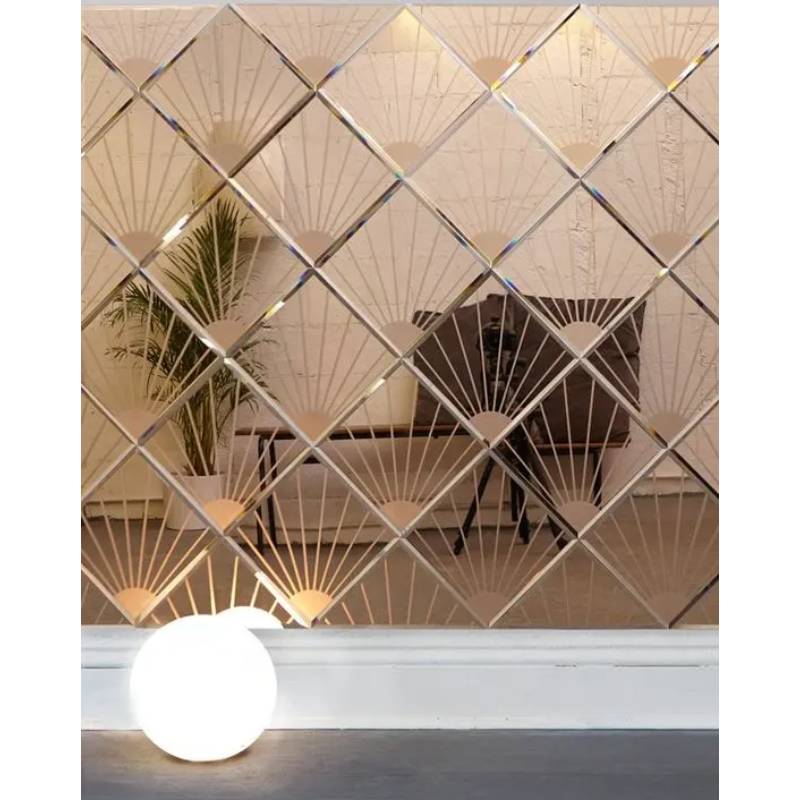Exploring Window Pane Patterns in Architecture and Design
Window pane patterns are often an overlooked aspect of architectural design, yet they play a significant role in enhancing aesthetic appeal, functionality, and even environmental sustainability. These patterns, formed by the arrangement, size, and style of window panes, can profoundly influence how light enters a space, how a building is perceived, and even its energy efficiency. In this article, we will explore the different types of window pane patterns, their historical significance, and their impact on contemporary architecture.
Historical Context
The use of window panes dates back to ancient civilizations. In Roman architecture, small openings were adorned with translucent materials to allow light while providing a barrier to the elements. The introduction of glass panes in the Middle Ages marked a revolutionary change in architectural design. By the 16th century, with the improvement of glass-making techniques, larger and clearer panes became common, leading to the iconic stained glass windows of cathedrals and castles. These intricate patterns not only served decorative purposes but also told stories and depicted religious themes.
As architectural styles evolved, different patterns emerged. The Renaissance brought symmetrical designs, while the Baroque period embraced elaborate curves and intricate details. The Industrial Revolution introduced factory-made glass, allowing for more standardized and diverse window pane patterns. Each era left its mark, leading to a rich tapestry of window designs that reflect the cultural and technological advancements of the time.
Types of Window Pane Patterns
1. Grid Patterns One of the most common window pane patterns is the grid. This involves dividing the window into several smaller panes using muntins or grids. Grid patterns create a classic look and can range from small square panes to larger rectangles. They are often seen in colonial and traditional homes, providing a timeless aesthetic.
2. Diagonal Patterns These patterns introduce a dynamic element to window design. By arranging panes in a diagonal formation, architects can create a sense of movement and energy. This pattern can be particularly striking in modern architecture, where bold angles and geometric shapes are celebrated.
window pane patterns
3. Casement and Sash Patterns Casement windows open outward, while sash windows slide vertically. Both types can feature unique pane arrangements, from single large panes to multiple smaller sections. The choice of pane pattern can enhance the functionality and style of the window, allowing for better ventilation and light control.
4. Arched Patterns Arched windows add elegance and sophistication to any building. When paired with intricate pane patterns, arches can create a dramatic focal point. This style is commonly found in Gothic and Romanesque architecture, where the curves are complemented by detailed designs.
5. Leaded Glass Patterns Traditionally associated with church windows, leaded glass consists of small pieces of colored glass held together by lead strips. These patterns can range from simple geometric designs to elaborate scenes. The play of light through these windows creates a magical ambiance, making them a popular choice for both residential and public buildings.
The Modern Relevance of Window Pane Patterns
In contemporary architecture, window pane patterns have evolved with advancements in material science and design philosophy. Large, undivided panes of glass are often utilized to maximize natural light and blur the boundaries between indoor and outdoor spaces. However, this doesn't mean traditional patterns are obsolete. In fact, there is a resurgence of interest in artisanal designs, where unique window patterns are used to convey individuality and craftsmanship.
Moreover, window pane patterns are vital in improving a building's energy efficiency. Double and triple-glazed windows with specific pane arrangements can significantly reduce heat loss and maximize sunlight. This focus on sustainability aligns well with modern architectural trends that prioritize eco-friendly practices.
Conclusion
Window pane patterns may seem like a small detail in the grand scheme of architectural design, but their influence is profound. From historical significance to modern applications, these patterns reflect our evolving relationship with light, space, and aesthetics. As architects and designers continue to experiment with new forms and technologies, the future of window pane patterns looks promising, ensuring that they remain an essential element in the story of architecture.
 Afrikaans
Afrikaans  Albanian
Albanian  Amharic
Amharic  Arabic
Arabic  Armenian
Armenian  Azerbaijani
Azerbaijani  Basque
Basque  Belarusian
Belarusian  Bengali
Bengali  Bosnian
Bosnian  Bulgarian
Bulgarian  Catalan
Catalan  Cebuano
Cebuano  Corsican
Corsican  Croatian
Croatian  Czech
Czech  Danish
Danish  Dutch
Dutch  English
English  Esperanto
Esperanto  Estonian
Estonian  Finnish
Finnish  French
French  Frisian
Frisian  Galician
Galician  Georgian
Georgian  German
German  Greek
Greek  Gujarati
Gujarati  Haitian Creole
Haitian Creole  hausa
hausa  hawaiian
hawaiian  Hebrew
Hebrew  Hindi
Hindi  Miao
Miao  Hungarian
Hungarian  Icelandic
Icelandic  igbo
igbo  Indonesian
Indonesian  irish
irish  Italian
Italian  Japanese
Japanese  Javanese
Javanese  Kannada
Kannada  kazakh
kazakh  Khmer
Khmer  Rwandese
Rwandese  Korean
Korean  Kurdish
Kurdish  Kyrgyz
Kyrgyz  Lao
Lao  Latin
Latin  Latvian
Latvian  Lithuanian
Lithuanian  Luxembourgish
Luxembourgish  Macedonian
Macedonian  Malgashi
Malgashi  Malay
Malay  Malayalam
Malayalam  Maltese
Maltese  Maori
Maori  Marathi
Marathi  Mongolian
Mongolian  Myanmar
Myanmar  Nepali
Nepali  Norwegian
Norwegian  Norwegian
Norwegian  Occitan
Occitan  Pashto
Pashto  Persian
Persian  Polish
Polish  Portuguese
Portuguese  Punjabi
Punjabi  Romanian
Romanian  Russian
Russian  Samoan
Samoan  Scottish Gaelic
Scottish Gaelic  Serbian
Serbian  Sesotho
Sesotho  Shona
Shona  Sindhi
Sindhi  Sinhala
Sinhala  Slovak
Slovak  Slovenian
Slovenian  Somali
Somali  Spanish
Spanish  Sundanese
Sundanese  Swahili
Swahili  Swedish
Swedish  Tagalog
Tagalog  Tajik
Tajik  Tamil
Tamil  Tatar
Tatar  Telugu
Telugu  Thai
Thai  Turkish
Turkish  Turkmen
Turkmen  Ukrainian
Ukrainian  Urdu
Urdu  Uighur
Uighur  Uzbek
Uzbek  Vietnamese
Vietnamese  Welsh
Welsh  Bantu
Bantu  Yiddish
Yiddish  Yoruba
Yoruba  Zulu
Zulu 

